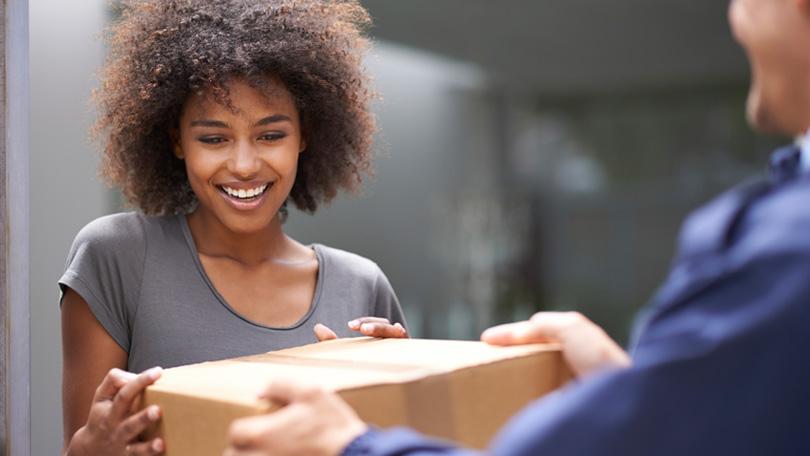On a scale of 1-10, how human are you? Ever asked yourself this question. Where…

First Impression Lasts Forever – But your Customer’s SECOND Purchase is the Most Important
Remember the satisfaction you had when a new customer made their first purchase from you? – It was like getting a gold medal at the end of a relay race!
But what happens if that customer buys once, and only once?
Fact is, true customer acquisition doesn’t end after the first purchase. The first purchase is a necessary step, but the second purchase is really the key to driving long-term value for your company.
If care is not taken, a first purchase could remain a one-time purchase only, and the business will miss out on potential repeat customers. Because, unfortunately, most buyers never engage with an initial brand again.
The challenge is that new customers haven’t yet formed a particularly strong association with your brand and thus, still need to be nurtured beyond an initial purchase.
Ensuring a customer gets their first purchase isn’t enough in terms of maximizing their lifetime value with your business, especially if you’ve spent significant resources acquiring that new customer in the first place.
The end goal shouldn’t be the first purchase – the end goal should be a second purchase, after which, customer retention has officially occurred and a customer is much more likely to return for additional purchases. However, if business owners haven’t recognized yet, that the second purchase is perhaps THE most important purchase in terms of driving customer loyalty, then they aren’t taking advantage of the biggest opportunity to go on to maximize customer lifetime value.
So it may well be time to shift some of your marketing focus from finding and engaging new customers to nurturing and convincing your existing customers. Here’s how, in 4 simple, yet strategic steps:
Identify First-Time Buyers

Now that you’ve decided to focus on convincing one-time buyers to make their next purchase, how do you do it effectively? There are many tactics to try, but first you may have to segment your group of buyers specifically. Without a targeted list of customers who have bought from your company just one time, there will be no way to market specifically to them. So, data is king here.
Many of your buyers will have interacted with your brand in multiple ways—in-person at stores, via your website, on social media platforms, and more. You need to be certain that you know exactly who bought what and when. To this end, the importance of record-keeping of your sales, online and offline is emphasized.
With the right data, you can then make sure you’re sending a second purchase campaign only to customers who have bought once. This makes for a very relevant and accurate marketing campaign.
Create Targeted Campaigns

With a reliable segment of your one-time buyers, you can then create marketing campaigns specifically pushing those target customers to make the next purchase. Create a second campaign after a few days, almost immediately following a first purchase; when interest is at peak, and the first-time buyers are likely going to be more responsive to recommendations for future engagement and repeat purchases.
The key to an effective second purchase campaign is, always, relevance and personalization. This would entail thinking about what exactly that customer may want or need, based on their first purchase, and offer it to them in an appealing way.
Some of the classic examples of a second purchase campaign are a discount, a related product offer, or a flash sale.
With the right targeted and personalized marketing to one-time buyers, you’ll ideally see more and more customers make a second purchase. Once you’ve gotten them to take the leap a second time, it’s only a matter of time before they buy again and again, and graciously refer other buyers to your business.
Give Recommendations for Second Purchase

From marketing statistics, “a loyal customer is worth up to 10 times the value of their initial purchase”. While a customer’s first purchase is in no way a set-in-stone sign of customer loyalty, it’s sure a signal of engagement and interest – and at that initial interaction, it is critical for business owners to take advantage of that window of opportunity.
This point reinforces the previous, and goes further to suggest that you cross-sell recommended products that encourage a second purchase to your first-time customers.
These recommended products could sell at a discount within a set time-frame, and letting your customers know the deadline for the discount offers; as this can instill prompt purchase and interest in a second buy.
It’s important to bear in mind, that for this cross-selling approach to work, recommended products will have to be complementary to their first purchase, or better still, in line with their needs, based on the data you would have gathered on them, during their first interaction with you.
Data could be as simple as their gender, their occupation, or the first purchase they made from your business. If a customer first buys a women’s jacket for instance, and you then offer a discount on men’s shoes to them, this cross-selling may not convert at all.
Tailoring your recommendations to the customer’s ‘needs’ or initial purchase, is where increased customer service and customer loyalty will indeed shine through.
Two Purchases are Better than One

On a final note, while getting a customer to a first purchase is great, it’s also critical to ensure that their journey with your brand doesn’t end there. Too often, business owners fail to continue to engage with customers after they’ve made their first purchase, and allow potentially high-value customers to slowly fade away.
When you ensure that a customer doesn’t just stop at a single purchase, you’re then able to take a more active role in maximizing their lifetime value, and relationship with your business.
So, how’s it going?
What’s your own retention story? What customer engagement metrics have you tried, that worked greatly in boosting loyalty?
You can share your story in the comments below!
credit: this article featured excerpts of wisdom nuggets on customer loyalty by Zaius




This Post Has 0 Comments